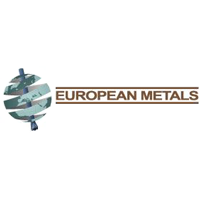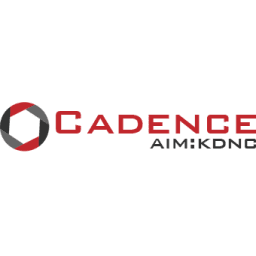European Metals Holdings Limited (ASX and AIM: EMH) has provided DirectorsTalk with an update to the progress of the Company’s current pre-feasibility study (“PFS”) on the Cinovec Lithium-Tin Project (“the project” or “Cinovec”).
The PFS is part of our ongoing progression of the Cinovic Lithium-Tin Project. The PFS is targeting an intital production rate of 20,000 tpa of Lithium Carbonate with associated tin, tungsten and sulphate of potash credits.
Key Points:
-- The PFS is well underway with the following
milestones met:
-- Recruitment of key members of the team
including the Project Manager, Andrew Smith
and a selection of owner-consultants for
the metallurgical studies.
-- Lead engineering, metallurgy, mining and
geological consultants now short-listed
or appointed.
-- Metallurgical testwork to support the PFS
is well under-way at a number of leading
technology centers across the globe. Inclusive
of large scale (300kg) bench scale testwork.
-- Preliminary analysis regarding a re-design
of the mining process to access the high
grade areas of the deposit provide strong
indications of a positive impact on the
economics of the project.
-- Drilling - third rig on site which has
commenced drilling as part of a 7,500m
programme.
European Metals Managing Director Mr Keith Coughlan said “I am very pleased with the progress achieved on the PFS that we are currently undertaking. We are making good progress on all fronts and the re-design of the mining process in particular appears to show a significant positive impact on the financial model of the project. With three rigs now in operation we expect to have a regular flow of drill result data, along with further updates on all aspects of the study.”
PRE-FEASIBILITY STUDY
Mining trade-off Studies
As part of the PFS, various trade-off studies have been completed on the underground mine design. The major focus has been on decreasing required capital and maximising cashflow in the first 5 years of the mine life. As a result, a revised mine plan has been designed to access the high grade lithium areas of the orebody that lie close to surface. In conjunction with this, mine schedules have been adopted to provide a steady-state flow to a lithium carbonate plant to maximize lithium output. When compared to the original scoping numbers, the re-design achieved the goals of lower capital and increased margins in the initial years. The plan is now assisting in directing the current drill programme that is targeting this high grade lithium area.
Metallurgical Testwork
Metallurgical testwork to support the PFS is well underway at a number of leading technology centres across the globe.
European Metals is working alongside “FAME”, a European-funded research grant aimed at supporting the development of European mineral resources, of which Cinovec has been selected as one of key projects.
The Natural History Museum and University of Exeter has conducted detailed Optical microscopy, QEMscan, XRD and EPMA analytical testwork, to characterise the processing-mineralogical and physical parameters such as liberation size, interlocking and grade distribution of the relevant ore minerals within the Cinovec ore body.
Wardell Armstrong in Truro has conducted a range of comminution testwork including establishing ball and rod work indices, heavy liquid separation and magnetic separation in addition to commencing a SAGability(TM) test within the past week.
The results learnt from the FAME project are being applied to a larger 300kg composite sample being tested at UVR-FIA GmbH (UVR) laboratory in Freiberg, Germany. The UVR test programme seeks to replicate and upscale the successful results achieved at bench-scale on a much larger sample. The programme work includes spiral concentration and bulk mica flotation.
The testwork has confirmed that a relatively coarse primary grind is required to liberate the lithium bearing micas which can be cheaply and efficiency concentrated through flotation. Previous tests conducted at UVR and Strategic Engineering in Perth indicate that a lithium float recovery of above 95% is possible.
The mica concentrate generated at UVR is scheduled to be used by Anzaplan (Germany) for further lithium leaching and hydrometallurgical testwork.
Environmental Social Impact Assessment.
European Metals is committed to undertaking an ‘Equator Principles’ Environmental Social Impact Assessment (ESIA) for the development of the Cinovec Project. The first phase baseline data collection is well underway and is being led by a Czech ESIA consultant.
Lead Engineer
Over the past month European Metals conducted a competitive tender process to select the lead engineer for the Pre-Feasibility Study. With the current downturn in the industry, the engineering firms approached are providing very competitive bids with industry leading personnel being available for the study. It is the Company’s intention to award this work within the next 2 weeks.
FURTHER DEVELOPMENTS
Drilling continues at the project with 3 rigs now in operation. The programme is specifically targeting the areas of higher grade, shallow lithium mineralisation that is highlighted in the mine re-design completed as part of the PFS. The programme is designed to increase the category of Mineral resource in the area and convert some of the existing Exploration Target to Mineral Resource.
PROJECT OVERVIEW
Cinovec Lithium/Tin Project
European Metals owns 100% of the Cinovec lithium-tin deposit in the Czech Republic. Cinovec is an historic mine incorporating a significant undeveloped lithium-tin resource with by-product potential including tungsten, rubidium, scandium, niobium and tantalum and potash. Cinovec hosts a globally significant hard rock lithium deposit with a total Indicated Mineral Resource of 49.1Mt @ 0.43% Li2O and an Inferred Mineral Resource of 482Mt @ 0.43% Li(2) O containing a combined 5.7 million tonnes Lithium Carbonate Equivalent.
This makes Cinovec the largest lithium deposit in Europe and the fourth largest non-brine deposit in the world.
Within this resource lies one of the largest undeveloped tin deposits in the world, with total Indicated Mineral Resource of 15.7Mt @ 0.26% Sn and an Inferred Mineral Resources of 59.7 Mt grading 0.21% Sn for a combined total of 178kt of contained tin. The Mineral Resource Estimates have been previously released on 18 May 2016. The deposit has previously had over 400,000 tonnes of ore mined as a trial sub-level open stope underground mining operation.
A Scoping Study conducted by specialist independent consultants indicates the deposit could be amenable to bulk underground mining. Metallurgical test work has produced both battery grade lithium carbonate and high-grade tin concentrate at excellent recoveries with the Scoping Study. Cinovec is centrally located for European end-users and is well serviced by infrastructure, with a sealed road adjacent to the deposit, rail lines located 5 km north and 8 km south of the deposit and an active 22 kV transmission line running to the historic mine. As the deposit lies in an active mining region, it has strong community support.


